GRAN CANARIA
Economy

Economy

Cities in GRAN CANARIA
| Maspalomas | Playa de taurito | Playa del ingles |
Popular destinations SPAIN
| Andalusia | Catalonia | Costa blanca |
| Costa brava | Costa del sol | El hierro |
| Formentera | Fuerteventura | Gran canaria |
| Ibiza | La gomera | La palma |
| Lanzarote | Mallorca | Menorca |
| Tenerife |
Economy
General
After the arrival of the Spaniards in the 15th century, sugar cane was mainly grown on Tenerife. A major disadvantage of the monoculture was that millions of pine trees died, after which erosion took hold on the island. The harmful consequences of this are still very noticeable today. The original Guanche population, who were used as slaves on the plantations, also suffered greatly. By 1700, the lucrative sugar trade was over as a result of competition from countries such as Cuba.
However, the sugar industry was replaced by viticulture, especially in Tenerife. However, the vineyards were destroyed in the 19th century by mildew, a plant disease. The Canary Malmsey wine was very popular in mainland Europe at the time.
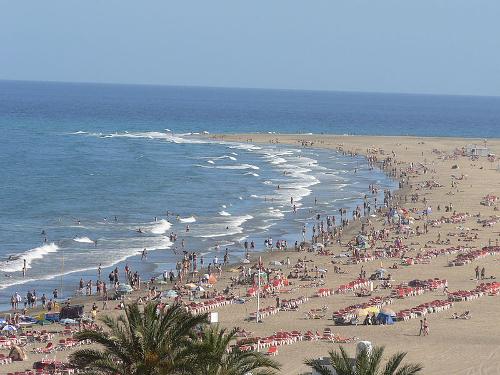 Beach and tourists, Gran CanariaPhoto: Bodo Teichert CC 3.0 Unported no changes made
Beach and tourists, Gran CanariaPhoto: Bodo Teichert CC 3.0 Unported no changes made
After the winegrowing, the focus was on the planting of Opuntia cacti on which the cochineal or scale insects were cultivated. A beautiful purple dye was made from these scale insects, used, among other things, for dyeing fabrics. In the mid-19th century, the Chinese banana was the main agricultural crop and export product of the Canary Islands.
The Canary Islands were and still are important as a mooring place for ships. In 1852, the entire archipelago was declared a free port area, further promoting trade.
In the late 1970s and early 1980s, the Canarian economy got into serious trouble due to tourists staying at home and the sharply declining trade with African and Latin American countries. After 1983, mass tourism started again and more and more capital was invested in the tourism industry. In 1989 another economic dip followed, which once again showed that the tourist industry is very sensitive to the economic cycle.
Current economic situation
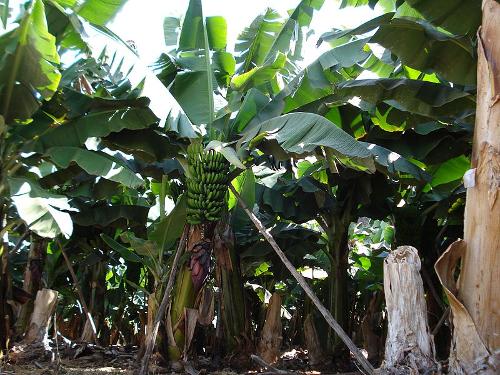 Banana plantation, Gran CanariaPhoto: Canarina CC 3.0 Unported no changes made
Banana plantation, Gran CanariaPhoto: Canarina CC 3.0 Unported no changes made
The main agricultural products of Gran Canaria are currently bananas, tomatoes and potatoes. All these products are exported to Europe and the United States. Coffee bushes are often planted around the banana plantations, but the yield is intended for personal use. This also applies to the cultivation of cotton, sugar cane, grains, vegetables and fruit. As far as vineyards are concerned, only about 500 hectares remain on the slopes of Monte Lentiscal.
More than 90% of the bananas are exported to the Spanish mainland, especially to Seville, Barcelona and Cádiz. Other export products are cut flowers and potted plants.
Livestock farming is not much in Gran Canaria, also due to the limited natural vegetation. The number of head of cattle is not large and products such as milk, meat and butter must therefore be imported.
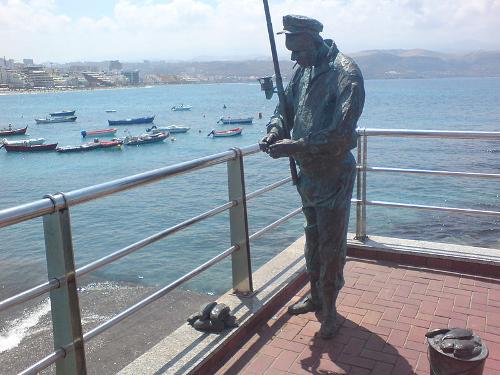 Statue for a fisherman, Las Palmas de Gran CanariaPhoto: Pepelopex CC3.0 Unported no changes made
Statue for a fisherman, Las Palmas de Gran CanariaPhoto: Pepelopex CC3.0 Unported no changes made
Las Palmas has an important fishing port, and many people (approx. 15,000) work in the fishing fleet, as well as in the canning and fishmeal factories, drying and salting plants. Most of the salt used in the fish factories comes from the salt pans of Lanzarote. Most fish are caught between the African coast and the archipelago, especially sardines and tuna.
The problem is that many African fishing grounds are becoming off limits to Canarian fishermen and the fish processing industry is moving to the inexpensive African coastal countries.
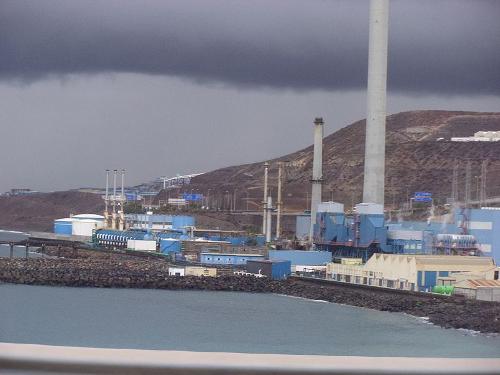 Nitrogen plant Gran CanariaPhoto: John - el - Castillo CC 3.0 Unported no changes made
Nitrogen plant Gran CanariaPhoto: John - el - Castillo CC 3.0 Unported no changes made
The nitrogen factories of Las Palmas are an important industrial activity. Many people also work in the processing sector, such as the paper, wood and food industries.
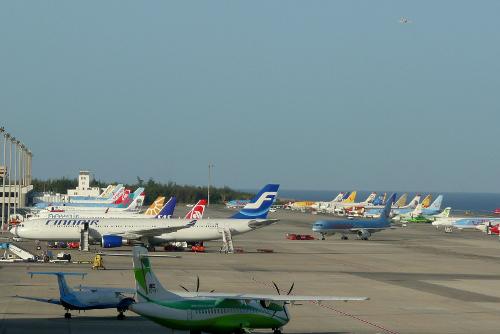 Gran Canaria airportPhoto: Janayte CC 4.0 International no changes made
Gran Canaria airportPhoto: Janayte CC 4.0 International no changes made
The main economic factor in Gran Canaria remains tourism.
Sources
Anderson, B. / Gran Canaria
Deltas
Evers, K. / Gran Canaria, Fuerteventura, Lanzarote
Gottmer/Becht
Gruschwitz, B.F. / Canarische Eilanden
Het Spectrum
MacPhedran, G. / Gran Canaria
Kosmos-Z&K
Rokebrand, R. / Reishandboek Gran Canaria
Elmar
Weniger, S. / Gran Canaria
Van Reemst
CIA - World Factbook
BBC - Country Profiles
Copyright: Team The World of Info